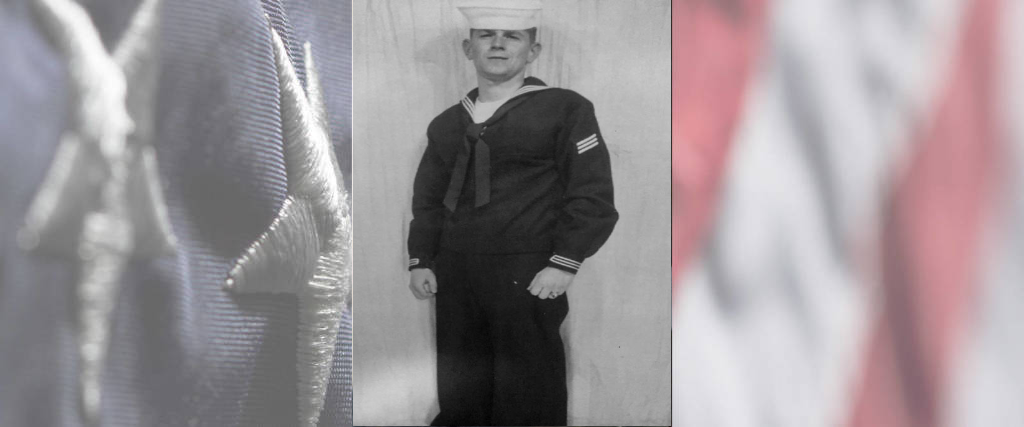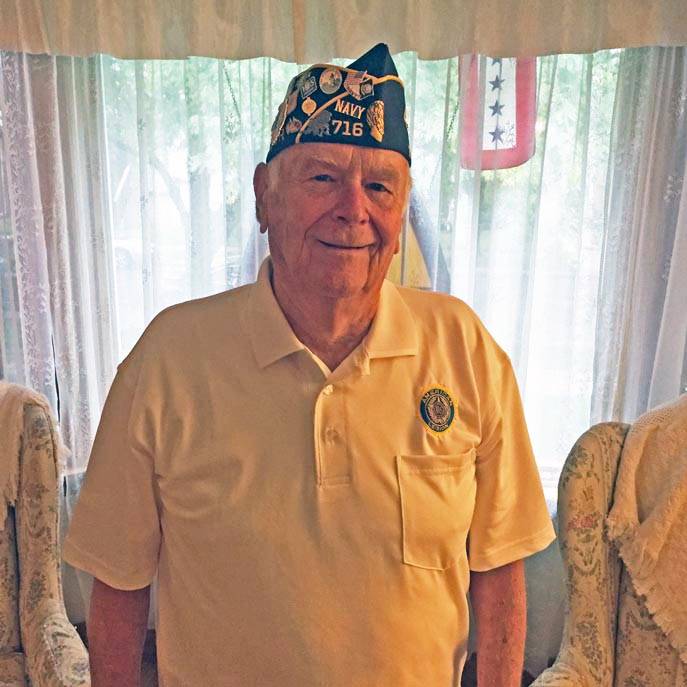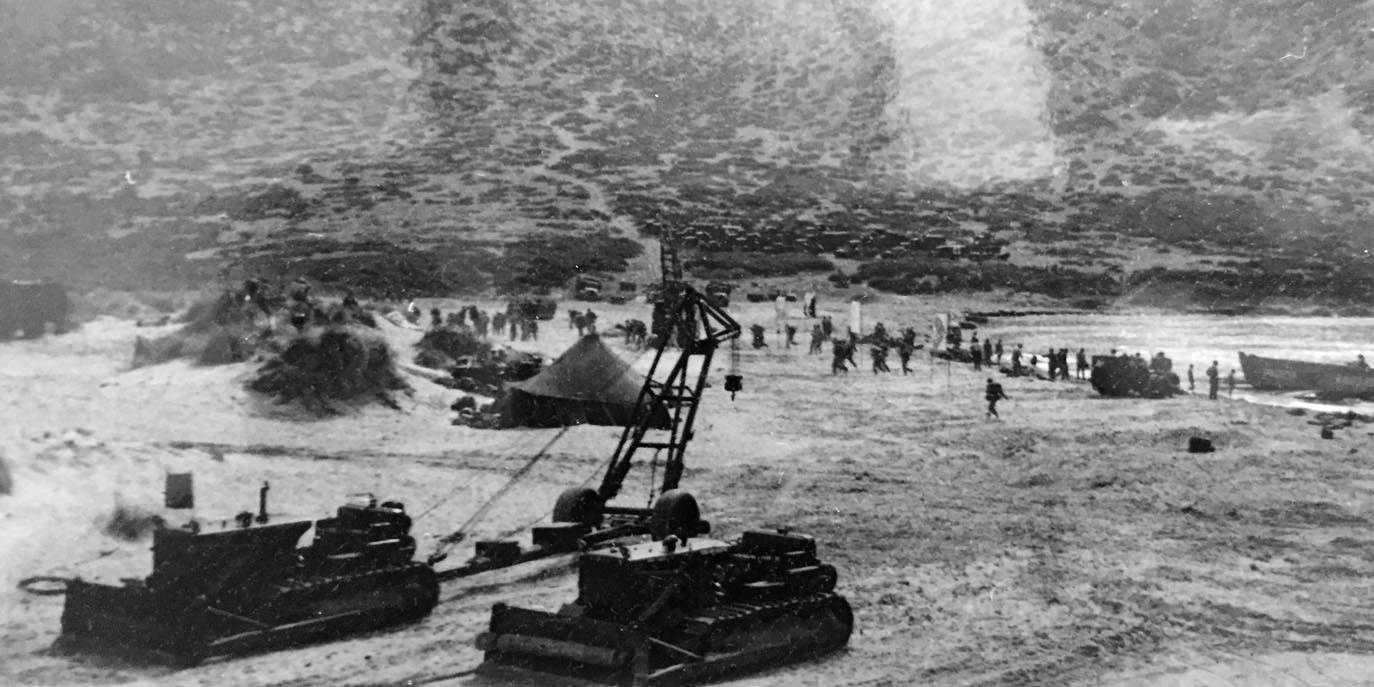U.S. Navy Korean War Chicago, IL Flight date: 07/11/18
By Mark Splitston, Honor Flight Chicago Veteran Interviews Volunteer
Paul “Joe” Peraino was born and raised in Chicago, graduating from Lane Tech High School in 1952. At the time of his graduation, the Korean War was raging and many of Joe’s classmates were either being drafted or were volunteering for the Army. Joe, however, wanted to be in the Navy. In fact, in his yearbook from the year before he wrote “joining the Navy” as his career aspiration. So, upon graduation, Joe enlisted and was placed into the U.S. Naval Reserve. He completed boot camp in 1953 at Great Lakes Naval Station while in the Reserves. At the same time, he worked at Western Electric and also went to college part time.
Joe began active duty in September,1954. He was initially assigned to a base in Texas which housed a large number of decommissioned World War II ships, including five minesweepers that would be Joe’s responsibility. Because he had some college experience, he was assigned to security detail rather than maintenance for the minesweepers. His assignment was to make sure that the ships were secure and that there were no fires or other problems with them. Occasionally, the ships were opened for the public to tour. On one of those public days, Joe and another sailor were assigned to make sure all civilians were off a ship before locking it up for the night. After Joe was finished securing his section, he waited a while for the other sailor, but he eventually concluded that the other sailor must have already left. Joe locked everything up, but did not find out until later that the other sailor had still been on the ship; passersby had heard him yelling and banging to try to get out.
After a year in Texas, Joe put in for a transfer to sea duty. He was then transferred to Norfolk, Virginia and was trained to be part of the Navy Construction Battalion, or Seabees. The Seabees came into existence at the start of World War II. The military had a lot of construction needs, often in dangerous areas of the world. Because civilian construction personnel were not allowed to resist enemy attack, the Seabees were established to provide military personnel to do construction projects. They were made famous in World War II because of their heroism in the many island invasions in the Pacific. Although the Seabees performed many tasks, their best-known one was to get to the beach early in amphibious invasions and clear the way for the Marines to continue the attack. Their tasks would include clearing minefields, removing obstacles, and building roads.
Joe was in Norfolk for a month or two before being assigned to the USS Plymouth Rock, which was a Landing Ship Dock (LSD) that had been placed in service in 1954. An LSD is an amphibious warfare ship with a well dock to transport and launch landing craft and amphibious vehicles. The LSD can carry many different things, but in this case for the Seabees, it carried two bulldozers and a surf crane. The Plymouth Rock transported 600 men, including 300 Marines and 300 crew, as well as ten Seabees, including Joe. Their role was to cut roads in remote areas using bulldozers, pull out vehicles that had become stuck, and perform other construction-related tasks depending on the situation. When the cruise left port, they picked up their contingent of Marines at Camp Lejeune.
Because of time-consuming drills and rough seas, the cruise across the Atlantic took ten days and Joe says many of the Marines became seasick. The Plymouth Rock was part of a six-ship convoy that went to the Mediterranean, cruising there for eight months as a combat ready force prepared to do amphibious landings. For much of the time, there was a conflict between Greece and England. It appeared that there might be a war so they were always on alert. They stopped at ports all around the Mediterranean, including places in Greece, Turkey, Italy, and France. They also made two amphibious landings which were designed to simulate true attack landings, one in Sardinia and one in Turkey. The usual order for these amphibious landings would be that the frogmen would go first, followed by the Seabees, and then the Marines. The ship also carried three Higgins boats, which is what Joe and the other Seabees would use to go back and forth to shore, during and after an amphibious landing. While the Marines would march inland after securing the beach, the Seabees would stay on the beach and remain for several days in MASH tents. During their stops in the Mediterranean, they saw the results of the destruction that this part of the world endured during WWII.
After nine months on the Plymouth Rock, Joe left active service and returned to the Reserves, where he served for an additional four years. He eventually left the Navy in 1960, with a total of eight years of service.
Upon returning home, Joe went back to work at Western Electric and also went to college at night on the GI Bill. He was an expediter at Western Electric until 1959, at which point he went to work for Wilson Meat Packers as a purchasing agent. The Wilson company owned other businesses, and he eventually transferred from the meat packing division to the pharmaceutical division and ultimately to Wilson Sporting Goods, where he was a director of purchasing. The company was bought out four times while he was there and after the fourth time, Joe was caught up in a large layoff at age 55. At that point, he had worked for Wilson for 30 years. Too young to retire, he went to work at a school for developmentally disabled children, where he worked for eight years before finally retiring eighteen years ago.
Joe met his future wife in 1957 at the wedding of mutual friends. They were married in 1959 and have seven children, two boys and five girls. Joe and his wife have spent a lot of their retirement watching their grandchildren grow up. Five of his seven children and thirteen of the seventeen grandchildren live in the area. He is especially proud that four of his grandchildren have followed him into the military. Perhaps he might have been “a little bit” of the inspiration for them being in the service. Recently one of his granddaughters graduated from the University of Illinois and was a member of ROTC. They asked for a military person to present her certificate; Joe was honored to be that person…and a very proud grandfather!
Joe has served his country and community in other ways besides his military service. He’s been a volunteer in the Boy Scouts for 55 years, including 27 years as a Scoutmaster and the rest as his troop committee chair. Both of his sons are Eagle Scouts. He has also been a long-time member of the American Legion and is the commander of his post. He says that he enjoyed his time in the military and had been fortunate to see a lot of things that he had never seen before.
Welcome home Mr. Peraino – thank you for your service! Enjoy your well-deserved Honor Flight Chicago trip!





